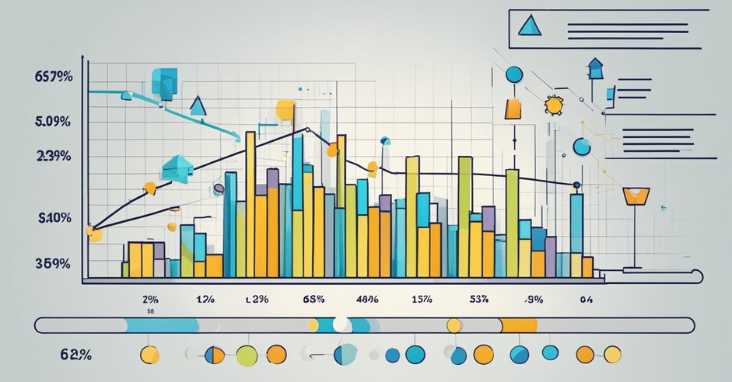What is a marketing analyst ? A marketing analyst evaluates market data to optimize strategies, understand consumer behavior, and boost business performance.
Marketing analysts are professionals who play a crucial role in helping businesses make informed decisions based on data-driven insights. They are responsible for collecting and analyzing data related to market trends, consumer behavior, and marketing campaigns to identify patterns and trends that can help businesses improve their marketing strategies and increase their ROI.

To become a successful marketing analyst, one needs to possess a combination of essential skills and tools such as data analysis, statistical modeling, and data visualization. They should also have a solid understanding of marketing data and be able to use analytical methodologies to extract meaningful insights from it. Additionally, they need to have excellent communication and reporting skills to effectively communicate their findings to stakeholders and decision-makers.
If you’re interested in pursuing a career as a marketing analyst, there are several educational pathways you can take, including obtaining a degree in marketing, statistics, or data science. You can also gain practical experience through internships and on-the-job training. As the world becomes increasingly data-driven, the demand for marketing analysts is expected to continue to grow, making it a promising career path for those interested in the intersection of marketing and data analysis.
Key Takeaways
- Marketing analysts play a critical role in helping businesses make data-driven decisions.
- Essential skills for a marketing analyst include data analysis, statistical modeling, and data visualization.
- Pursuing a degree in marketing, statistics, or data science can help prepare you for a career as a marketing analyst.
Role of a Marketing Analyst
Marketing analysts play a crucial role in organizations as they help in identifying and interpreting data to create effective marketing strategies and campaigns. They are responsible for analyzing data, conducting market research, and identifying trends to help organizations make informed decisions.
Data Analysis and Interpretation
Marketing analysts use various tools and techniques to analyze data and provide insights to organizations. They collect and analyze data from various sources such as customer surveys, sales reports, and social media to identify patterns and trends. They then interpret the data and provide recommendations to organizations to help them improve their marketing efforts.
Market Research and Trends
Marketing analysts conduct market research to identify consumer preferences, behavior, and trends. They use this information to help organizations make informed decisions about their marketing strategies and campaigns. They also keep track of industry trends and competitor activities to help organizations stay ahead of the curve.
Marketing Strategies and Campaigns
Marketing analysts work closely with marketing teams to develop effective marketing strategies and campaigns. They use their data analysis and market research skills to identify the target audience, create messaging, and determine the most effective channels to reach the audience. They also track the performance of marketing campaigns and provide recommendations for improvement.
In conclusion, marketing analysts are vital to the success of marketing efforts in organizations. They provide valuable insights and recommendations based on data analysis and market research. Organizations that invest in marketing analysts can expect to see improved marketing strategies and campaigns that lead to increased sales and revenue. For more information on the role of marketing analysts, check out this resource.
Essential Skills and Tools
Analytical and Critical Thinking
A marketing analyst must possess strong analytical and critical thinking skills to be able to interpret data, identify trends and patterns, and draw meaningful insights. This involves the ability to analyze large sets of data, identify key performance indicators, and develop actionable recommendations based on findings. The analyst must also be able to think critically about the data, question assumptions, and identify potential biases or errors.
Proficiency in statistical analysis and data visualization tools such as R, Python, and Tableau is essential for a marketing analyst. Knowledge of Excel and SQL is also important for data manipulation and analysis. The ability to effectively communicate findings and insights to stakeholders is critical, and requires strong communication and presentation skills.
Technical Proficiency
In addition to analytical skills, a marketing analyst must possess technical proficiency in various tools and technologies. The analyst must be comfortable working with large datasets and be able to manipulate and analyze data using statistical software and programming languages such as R and Python. Knowledge of SQL is also important for data manipulation and analysis.
The analyst must also be proficient in data visualization tools such as Tableau, which allows them to create compelling visualizations and dashboards that communicate complex data in an easy-to-understand format. Familiarity with artificial intelligence (AI) and machine learning (ML) technologies is also becoming increasingly important for marketing analysts.
Communication and Presentation
Effective communication and presentation skills are critical for a marketing analyst to be able to convey complex data and insights to stakeholders. This involves the ability to translate technical findings into actionable recommendations that are easily understood by non-technical stakeholders. The analyst must also be able to effectively present their findings using visual aids such as charts, graphs, and tables.
Strong written and verbal communication skills are essential for a marketing analyst to be able to explain their findings and recommendations to stakeholders. The analyst must be able to communicate complex technical information in a clear and concise manner that is easily understood by non-technical stakeholders.
An external resource that can help marketing analysts enhance their communication skills is the Harvard Business Review’s article on “How to Improve Your Business Writing”. This article provides practical tips and strategies for improving written communication skills, including how to write clearly and concisely, how to structure a document, and how to use language effectively.
Understanding Marketing Data

Marketing analysts rely heavily on data to make informed decisions about their marketing strategies. Understanding marketing data is crucial for any marketing analyst to be successful in their role. In this section, we will explore some of the key areas of marketing data that analysts need to understand.
Consumer Behavior Analysis
One of the most important aspects of marketing data is understanding consumer behavior. By analyzing consumer behavior, marketers can gain insights into what motivates customers to make purchases, what influences their decision-making processes, and how they interact with brands.
To conduct consumer behavior analysis, marketers often rely on data from various sources, such as customer surveys, online behavior tracking, and social media analytics. By analyzing this data, they can gain insights into customer preferences, attitudes, and behaviors, which can inform their marketing strategies.
Sales and Revenue Metrics
Another crucial area of marketing data is sales and revenue metrics. By tracking sales and revenue, marketers can measure the effectiveness of their marketing campaigns and make data-driven decisions about where to invest their resources.
Some of the key sales and revenue metrics that marketing analysts track include conversion rates, customer lifetime value, and return on investment (ROI). By analyzing these metrics, marketers can identify areas where they can improve their marketing strategies to drive better results.
Competitor and Market Positioning
Understanding the competitive landscape and market positioning is also critical for marketing analysts. By analyzing competitor and market data, marketers can gain insights into what their competitors are doing and how they can differentiate themselves in the market.
To conduct competitor and market analysis, marketers often rely on data from various sources, such as industry reports, market research, and social media analytics. By analyzing this data, they can gain insights into market trends, consumer preferences, and competitor strategies, which can inform their marketing strategies.
Overall, understanding marketing data is essential for any marketing analyst to be successful in their role. By analyzing consumer behavior, sales and revenue metrics, and competitor and market positioning, marketers can make data-driven decisions that drive better results. For more information on marketing data, check out this resource.
Educational Pathways

Academic Qualifications
A career in marketing analysis typically requires a bachelor’s degree in a related field such as computer science, business administration, or marketing. A bachelor’s degree provides a solid foundation in the principles of marketing, data analysis, statistics, and research methods.
Additionally, many marketing analysts pursue advanced degrees such as a Master’s in Business Administration (MBA) or a Master’s in Marketing Research (MMR). These advanced degrees may provide a deeper understanding of marketing theory and practical applications, as well as opportunities to specialize in specific areas of marketing analysis.
Professional Certifications
Professional certifications can help marketing analysts demonstrate their expertise and stand out in a competitive job market. The most commonly recognized certifications for marketing analysts include the Google Analytics Individual Qualification (IQ) and the Microsoft Certified Solutions Expert (MCSE) in Business Intelligence.
Other relevant certifications include the Digital Analytics Association (DAA) Certified Web Analyst and the Market Research Society (MRS) Advanced Certificate in Market and Social Research Practice.
Continued Learning Opportunities
Continued learning is essential for marketing analysts to stay up-to-date with the latest trends and technologies in the field. Many marketing analysts attend industry conferences and workshops to learn about new tools and techniques for data analysis and marketing research.
Online courses and webinars are also valuable resources for continued learning. Platforms such as Coursera, Udemy, and LinkedIn Learning offer a variety of courses in marketing analytics, data science, and related fields.
It is important to note that while formal education and certifications are valuable, practical experience is also crucial for success as a marketing analyst. Internships and entry-level positions provide opportunities to gain hands-on experience with real-world marketing data and analysis.
For more information on educational pathways in marketing analysis, visit the American Marketing Association’s Education Resource Center.
Career Progression

Entry-Level to Senior Roles
Marketing analysts typically begin their careers in entry-level positions, such as market research analyst or marketing coordinator. These roles involve collecting and analyzing data on customer behavior, market trends, and competitor activity. As they gain experience, marketing analysts can progress to more senior roles, such as marketing strategist or marketing manager.
Marketing Analyst to Marketing Manager
Marketing analysts who demonstrate strong analytical skills and strategic thinking can progress to become marketing managers. In this role, they are responsible for developing and implementing marketing strategies that promote the organization’s products or services. Marketing managers also oversee the work of marketing analysts and other marketing professionals.
Specializations and Niches
Marketing analysts can specialize in a variety of areas, such as digital marketing, social media marketing, or market research. They can also focus on specific industries, such as healthcare or finance. Specializing in a niche area can help marketing analysts stand out in a competitive job market and increase their earning potential.
According to the job outlook for marketing analysts, the demand for this profession is expected to grow at a rate of 18% from 2020 to 2030, which is much faster than the average for all occupations. This growth is driven by the increasing importance of data-driven decision making in marketing and the growing use of digital marketing channels.
To learn more about the career path of a marketing analyst, visit the Bureau of Labor Statistics.
Industry Applications

Marketing analysts are responsible for analyzing marketing efforts and their impact on products and services. They work in a range of industries, including digital marketing, retail, finance, and government. Here are some examples of how marketing analysts can apply their skills in different industries.
Digital Marketing and E-commerce
In the digital marketing and e-commerce industry, marketing analysts use data to optimize marketing campaigns and improve customer engagement. They analyze website traffic, social media engagement, and other digital metrics to identify trends and opportunities for improvement.
Marketing analysts also use A/B testing to determine which marketing strategies are most effective. By comparing the performance of different marketing campaigns, they can identify the most successful strategies and optimize future campaigns accordingly.
One example of a digital marketing resource with high authority is HubSpot.
Retail and Consumer Goods
In the retail and consumer goods industry, marketing analysts use data to understand consumer behavior and preferences. They analyze sales data, customer feedback, and other metrics to identify trends and opportunities for improvement.
Marketing analysts also use segmentation to target specific customer groups with personalized marketing messages. By tailoring marketing messages to specific customer segments, they can improve the effectiveness of their marketing campaigns.
Finance and Government
In the finance and government industries, marketing analysts use data to understand consumer behavior and preferences. They analyze financial data, customer feedback, and other metrics to identify trends and opportunities for improvement.
Marketing analysts also use segmentation to target specific customer groups with personalized marketing messages. By tailoring marketing messages to specific customer segments, they can improve the effectiveness of their marketing campaigns.
One example of a government marketing resource with high authority is the U.S. Small Business Administration.
Analytical Methodologies
Quantitative and Qualitative Techniques
Marketing analysts use a range of quantitative and qualitative techniques to gather data and insights about consumer behavior. Quantitative techniques involve the use of statistical analysis to identify patterns and trends in large data sets. These techniques are useful for forecasting future demand and identifying opportunities for growth. On the other hand, qualitative techniques involve the use of surveys, interviews, and focus groups to gather more detailed information about consumer preferences and attitudes. These techniques are useful for understanding the why behind consumer behavior.
One popular quantitative technique used by marketing analysts is regression analysis. This technique involves identifying the relationship between two or more variables and using that relationship to predict future outcomes. For example, a marketing analyst might use regression analysis to identify the relationship between advertising spend and sales revenue. This information can then be used to optimize advertising spend and maximize return on investment.
Forecasting and Predictive Analysis
Forecasting and predictive analysis are important tools for marketing analysts. These techniques involve using historical data to predict future trends and outcomes. For example, a marketing analyst might use forecasting techniques to predict demand for a product or service in the coming months or years. This information can then be used to inform marketing and sales strategies.
Predictive analysis involves the use of machine learning algorithms to identify patterns and trends in data sets. These algorithms can then be used to make predictions about future outcomes. For example, a marketing analyst might use predictive analysis to identify which customers are most likely to churn and which customers are most likely to make a purchase.
Optimization and A/B Testing
Optimization and A/B testing are important techniques used by marketing analysts to improve the effectiveness of marketing campaigns. Optimization involves identifying the best possible combination of marketing elements (such as messaging, imagery, and targeting) to achieve a desired outcome. A/B testing involves testing two different versions of a marketing element (such as a landing page or email subject line) to determine which performs better.
Marketing analysts use statistical analysis to measure the effectiveness of different marketing elements and to identify areas for improvement. This information can then be used to optimize marketing campaigns and improve return on investment.
Overall, marketing analysts use a range of analytical methodologies to gather data and insights about consumer behavior. By using a combination of quantitative and qualitative techniques, forecasting and predictive analysis, and optimization and A/B testing, marketing analysts are able to make data-driven decisions that improve the effectiveness of marketing campaigns.
Here is a useful resource on how to improve marketing analytics.
Reporting and Communication

Creating Compelling Reports
As a marketing analyst, creating compelling reports is a crucial aspect of the job. Reports must be concise, yet informative, and should convey the necessary information to stakeholders in an easily digestible format. To achieve this, marketing analysts must be adept at using graphs, tables, and other visual aids to present data in a clear and concise manner.
One helpful resource for creating visually appealing reports is Canva, a graphic design platform that offers a variety of templates and tools specifically designed for data visualization. By utilizing tools like Canva, marketing analysts can create reports that are both informative and visually appealing, making them more engaging for executives and other stakeholders.
Data Storytelling
Marketing analysts must also be skilled at data storytelling, which involves using data to tell a compelling story that resonates with stakeholders. By presenting data in a way that tells a story, marketing analysts can better engage stakeholders and help them make informed decisions.
One effective way to incorporate data storytelling into reports is by using case studies or real-world examples to illustrate key points. By using concrete examples, marketing analysts can help stakeholders better understand the data and its implications for decision-making.
Stakeholder Engagement
Finally, effective communication with stakeholders is critical for marketing analysts. This involves not only presenting data in a clear and concise manner, but also engaging with stakeholders to understand their needs and concerns.
To foster effective stakeholder engagement, marketing analysts should be proactive in seeking feedback and input from stakeholders. This can involve conducting surveys or focus groups to gather input, or simply reaching out to stakeholders directly to solicit their feedback.
By engaging with stakeholders in a meaningful way, marketing analysts can build trust and credibility, making it easier to communicate effectively and drive decision-making.
In summary, effective reporting and communication are critical skills for marketing analysts. By creating compelling reports, utilizing data storytelling, and engaging with stakeholders, marketing analysts can help drive informed decision-making and achieve successful outcomes.
Emerging Trends and Technologies

Artificial Intelligence in Marketing
Artificial Intelligence (AI) is revolutionizing the way marketing analysts approach their work. AI-powered tools can help marketers analyze large amounts of data in real-time, allowing them to make data-driven decisions quickly. By leveraging AI, marketers can improve their targeting, personalization, and customer engagement strategies.
One of the most significant benefits of AI in marketing is its ability to automate repetitive tasks, such as data entry and analysis. This frees up marketing analysts to focus on more strategic tasks, such as developing and implementing marketing campaigns. AI can also help marketers identify patterns and trends in customer behavior, allowing them to create more effective marketing strategies.
According to a recent report by MarketsandMarkets, the AI in marketing industry is expected to grow from $5.2 billion in 2019 to $40.1 billion by 2025, at a CAGR of 29.7%. This growth is driven by the increasing demand for personalized marketing and the need for real-time data analysis.
The Role of Big Data
Big Data is another emerging trend that is transforming the marketing industry. With the increasing amount of data available, marketers can gain insights into customer behavior and preferences that were previously impossible to obtain. By analyzing this data, marketers can create more targeted and personalized marketing campaigns.
Big Data can also help marketers identify new market trends and opportunities. By analyzing social media conversations and other online behavior, marketers can gain insights into what customers are talking about and what they are interested in.
According to a report by IDC, the global datasphere is expected to grow from 33 zettabytes in 2018 to 175 zettabytes by 2025. This growth is driven by the increasing amount of data generated by connected devices, social media, and other sources.
Web Analytics and Online Behavior
Web analytics is the process of analyzing website traffic and user behavior to improve website performance and user experience. By analyzing web analytics data, marketers can gain insights into how users interact with their website, what content is most popular, and what actions users take.
One of the most popular web analytics tools is Google Analytics. With Google Analytics, marketers can track website traffic, user behavior, and conversion rates. They can also create custom reports and dashboards to visualize their data.
According to a report by Statista, the global web analytics market is expected to grow from $2.5 billion in 2019 to $5.4 billion by 2024, at a CAGR of 16.9%. This growth is driven by the increasing demand for data-driven decision-making and the need for real-time data analysis.
In conclusion, emerging trends and technologies such as AI, Big Data, and web analytics are transforming the marketing industry. By leveraging these technologies, marketers can gain insights into customer behavior and preferences, create more targeted and personalized marketing campaigns, and identify new market trends and opportunities.
Frequently Asked Questions

What are the primary responsibilities of a marketing analyst?
A marketing analyst is responsible for analyzing market trends and consumer data to help companies make informed decisions about their marketing strategies. They collect and analyze data on consumer behavior, market trends, and competitors to identify areas for improvement and opportunities for growth. Marketing analysts also create and maintain databases and dashboards to track performance metrics and present findings to stakeholders.
What skills are essential for a successful career in marketing analysis?
To be successful as a marketing analyst, one must have strong analytical skills, attention to detail, and the ability to work with large datasets. Additionally, knowledge of statistical analysis and data visualization tools is essential. Strong communication skills are also necessary to effectively present findings to stakeholders and collaborate with cross-functional teams.
How does the role of a marketing analyst differ from a data analyst?
While both roles involve working with data, marketing analysts focus specifically on analyzing market trends and consumer behavior to inform marketing strategies. Data analysts, on the other hand, analyze data across various business functions to identify areas for improvement and inform overall business strategy.
What qualifications are necessary to become a marketing analyst?
Most marketing analyst positions require a bachelor’s degree in marketing, statistics, or a related field. Some employers may also require a master’s degree in a related field or relevant work experience. Additionally, proficiency in data analysis tools such as Excel, SQL, and Python is often required.
What tasks does an entry-level marketing analyst typically handle?
Entry-level marketing analysts may be responsible for data collection and analysis, creating and maintaining databases and dashboards, and assisting with the preparation of reports and presentations. They may also be involved in market research and competitor analysis.
What is the role of a go-to-market analyst within a company?
A go-to-market analyst is responsible for developing and executing strategies to bring new products or services to market. They work closely with cross-functional teams to identify target markets, create pricing strategies, and develop marketing campaigns. The role requires strong analytical skills, strategic thinking, and the ability to collaborate effectively with others.
For more information on marketing analysis, visit MarketingProfs.





